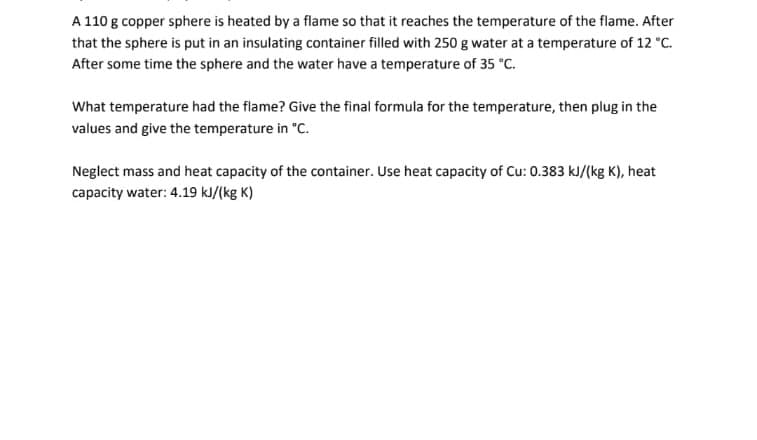A 110 g copper sphere is heated by a flame so that it reaches the temperature of the flame. After that the sphere is put in an insulating container filled with 250 g water at a temperature of 12 "C. After some time the sphere and the water have a temperature of 35 °C. What temperature had the flame? Give the final formula for the temperature, then plug in the values and give the temperature in "C. Neglect mass and heat capacity of the container. Use heat capacity of Cu: 0.383 kJ/(kg K), heat capacity water: 4.19 kJ/(kg K)
Energy transfer
The flow of energy from one region to another region is referred to as energy transfer. Since energy is quantitative; it must be transferred to a body or a material to work or to heat the system.
Molar Specific Heat
Heat capacity is the amount of heat energy absorbed or released by a chemical substance per the change in temperature of that substance. The change in heat is also called enthalpy. The SI unit of heat capacity is Joules per Kelvin, which is (J K-1)
Thermal Properties of Matter
Thermal energy is described as one of the form of heat energy which flows from one body of higher temperature to the other with the lower temperature when these two bodies are placed in contact to each other. Heat is described as the form of energy which is transferred between the two systems or in between the systems and their surrounding by the virtue of difference in temperature. Calorimetry is that branch of science which helps in measuring the changes which are taking place in the heat energy of a given body.

Step by step
Solved in 2 steps

how did you get from 0m1C1(T-T1)+m2C2(T-T2)=0 to T1=m2C2(T-T2)m1C1+T



